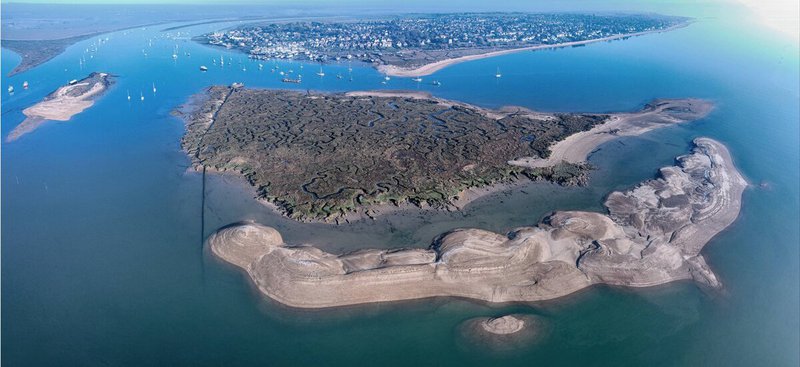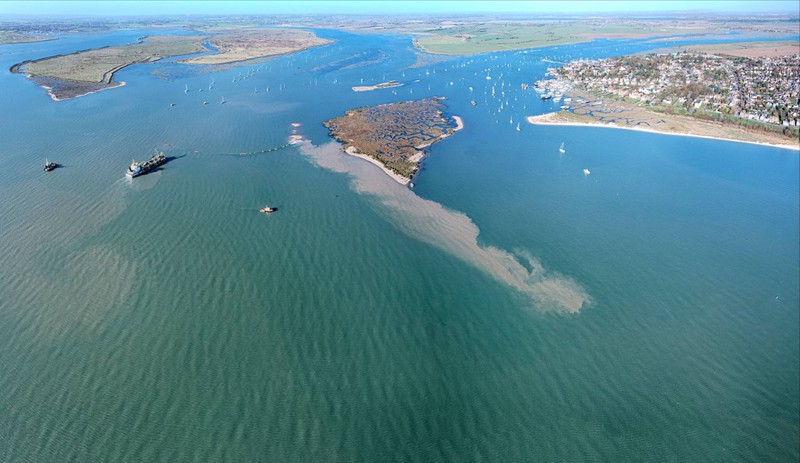Mersea Harbour and Tollesbury Wick Climate Change Adaptation Recharge Project
Mersea Harbour is surrounded by rich tidal waters with mudflat, salt marsh and beaches home to important bird species, native oyster (Ostrea edulis) beds, restaurants and yacht clubs. It is a valuable area environmentally and economically. Erosion of Old Hill Point, Cobmarsh and Packing Marsh Islands has left the harbour vulnerable to tidal and wave erosion, putting these important tourist and species rich areas at risk.
An intertidal recharge was planned by the Mersea Harbour Protection Trust (MHPT- a charitable trust formed by local interest groups), to protect the harbour from erosion. The project was proposed to deliver 1.7 ha of potential nesting ground for little terns, increase the potential for saltmarsh colonisation and absorb long fetch wave energy to reduce erosion. This would result in protection and enhancement of the harbour area. Residual outcomes include long term viability of the harbour for commercial and leisure and to preserve the character of Mersea waterside.
The project used dredged sand and gravel, provided from the Harwich Haven Authority channel deepening project, placed in four areas: Packing Marsh Island, Cobmarsh Island, Tollesbury Wick and Old Hall. Placements were ensured to be made precisely using both ‘rainbow discharge’ over the bow and floating pipeline.
The placed sediments have slowed erosion by reinforcing the islands, brushwood fencing was added in two locations preventing the movement of sediment into navigable channels. Bird populations are being monitored by the Royal Society for the Protection of Birds (RSPB) and it is anticipated that the restored areas will develop further to provide ideal habitat for nesting birds in the future.
The project was made possible by the drive of MHPT; Harwich Haven Authority spent in excess of £1.2M for the placement and the Environment Agency have contributed £300,000 towards pre and post monitoring which is also being supported by the RSPB. The project was planned to coincide with the capital deepening project and is a good example of how collaboration to connect supply and demand can lead to successful beneficial use of sediment projects.
Graphical information:


References/web links
1.Omreg.net. 2022. 0027 - Mersea Harbour. [online] Available at: https://www.omreg.net/query-database/0027-mersea-harbour/ [Accessed 12 July 2022]. 2.Mersea Harbour Protection Trust, 2016. Mersea Harbour and Tollesbury Wick Climate change adaptation recharge project. [online] Available at: http://savemerseaharbour.org/wp-content/uploads/2015/05/ES-final-Mersea-Harbour-Protection-Trust-Climate-change-adaptation-recharge-project.pdf [Accessed 12 July 2022]. 3.HHA. 2022. Beneficial disposal project begins at Mersea Island. [online] Available at: https://hha.co.uk/channel-deepening-project-blog/beneficial-disposal-project-begins-at-mersea-island/ [Accessed 12 July 2022].